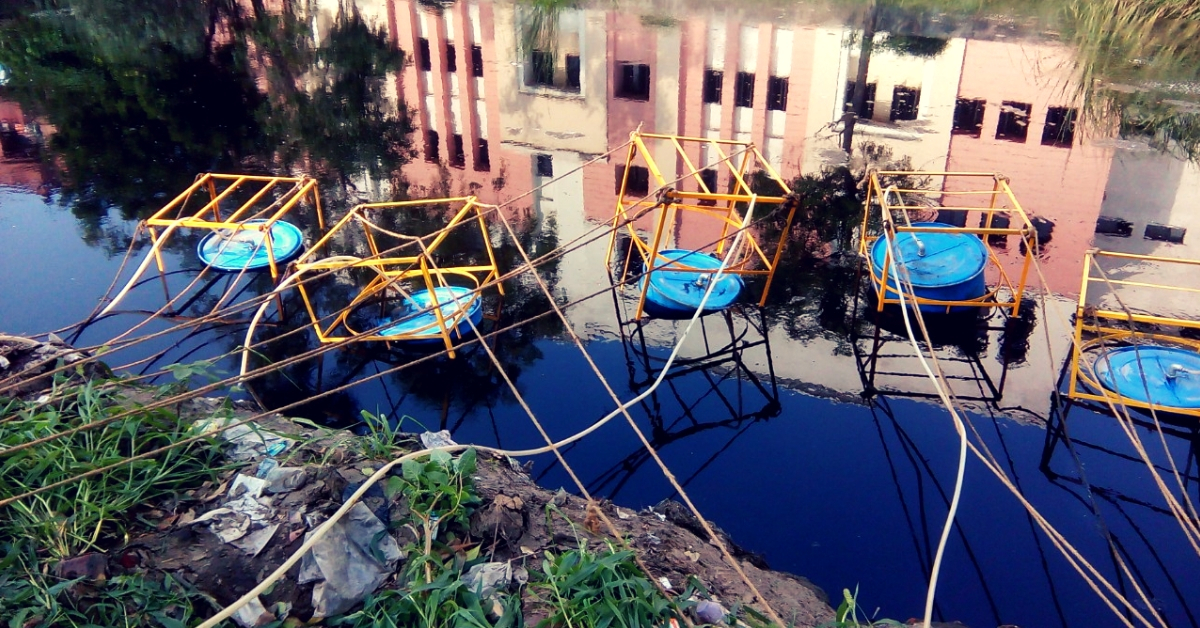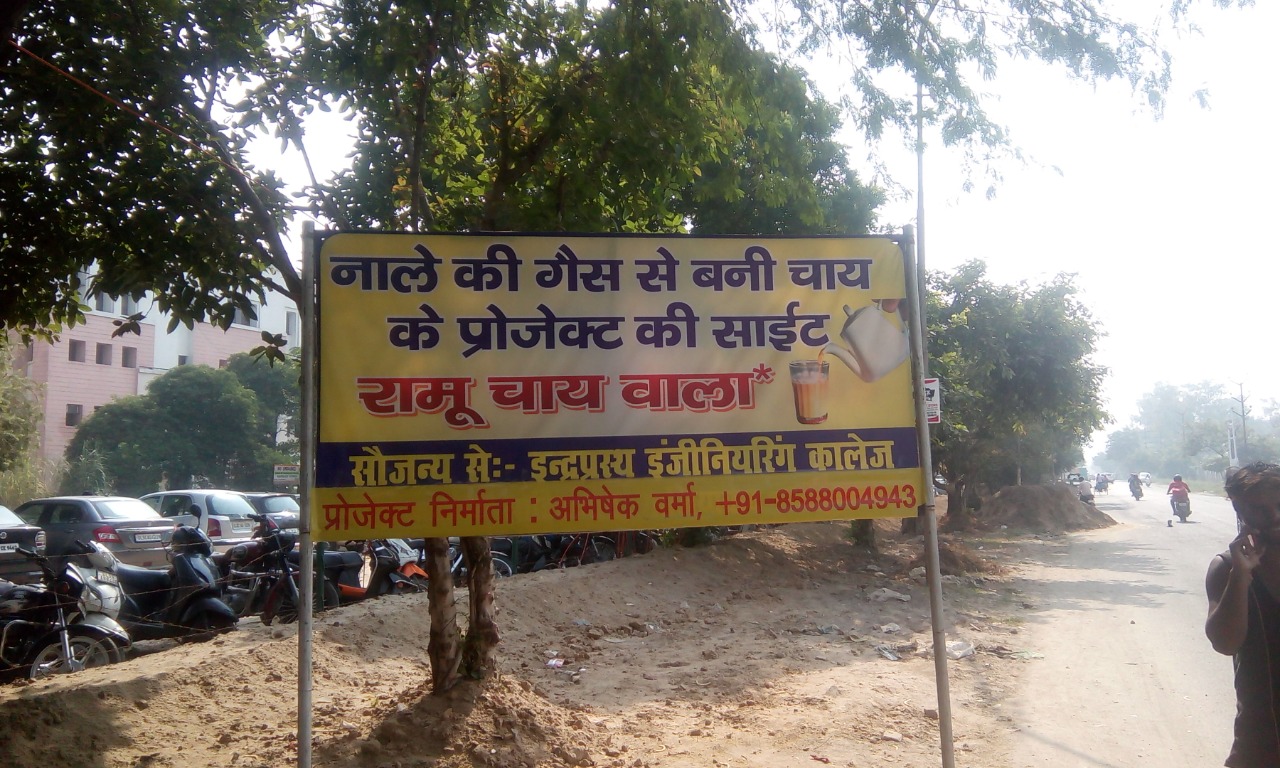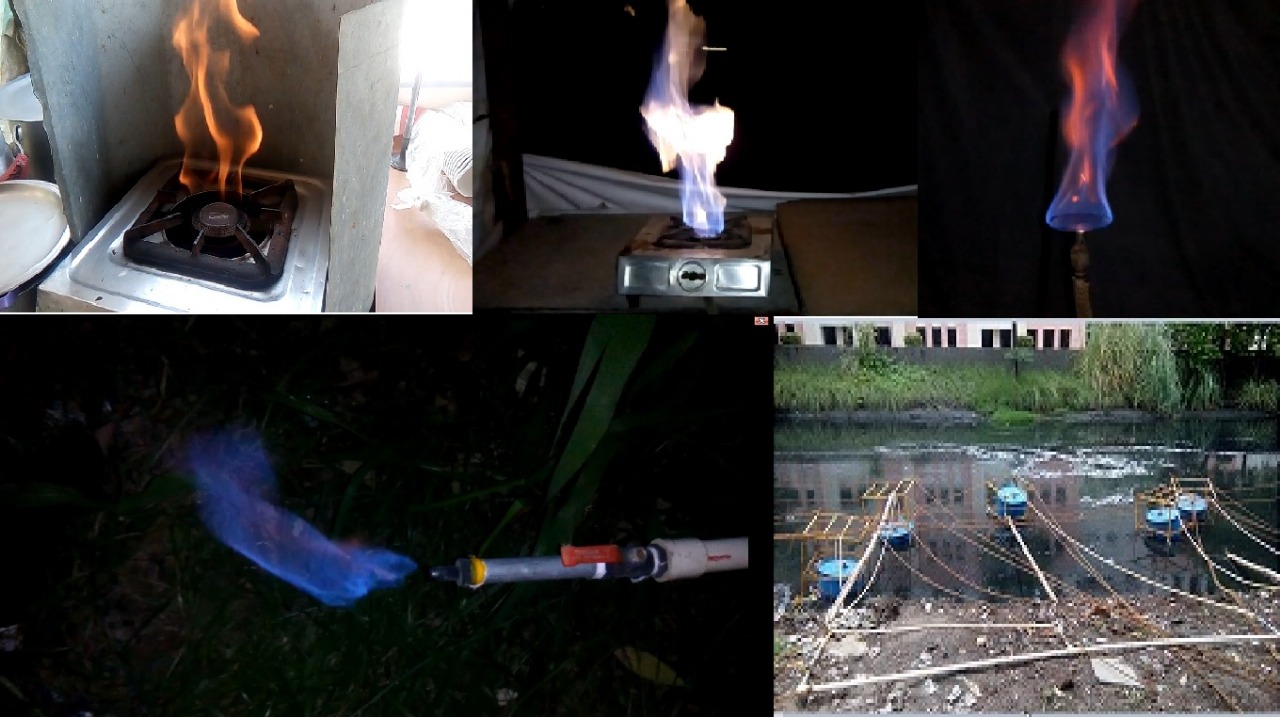Genius! UP Man Uses ‘Gutter Gas’ to Help Tea-Stall Owner Earn Four Times More
While others around him complained about the foul stench from the sewer, scrunching their noses up in disgust when passing by, Abhishek thought of it as an opportunity for innovation.

The year was 2013. Abhishek Verma, who hailed from Kanpur, was pursuing his first-year mechanical engineering at Ghaziabad’s Inderprastha Engineering College.
For the longest time, a big open sewer known as Surya Nagar Nala, flowed beside the student hostel, inconveniencing the students.
While others around him complained about the foul stench from the sewer, scrunching their noses up in disgust when passing by, Abhishek thought of it as an opportunity for innovation.

From a young age, Abhishek was inclined towards science. He would often open up electronic gadgets to decode their working or find innovative solutions to tackle any problem at hand.
So when the dirty water from the Surya Nagar Nala foamed and let out gas bubbles, Abhishek remembered learning about the decomposition process of organic waste within the sewer.
He got another classmate, Abhinendra Patel, on board, collected a sample of this gas, and sent it for testing to IIT-Delhi.
When the lab conducted a Gas Chromatography test, the duo found that the gas being released from the drain had the same composition as gobar gas or biogas, where the percentage of methane was 65 per cent. This made it inflammable.
Speaking to The Better India, Abhishek says, “My immediate thought was–how can we develop a system which can effectively trap and extract this gas and use it for daily purposes?”
The two then worked on a prototype. The gas extracted would help Shiv Prasad, the proprietor of the nearby Ramu tea-stall.
In June 2014, they demonstrated the concept at Shiv Prasad’s stall.

How did it work?
When they found that the drain released 60-70 per cent methane gas, they took a set of six drums, put them in a secondary case, connected them with iron barricades and submerged them into the open drain.
The drums trapped the gas and began to rise, as the pressure inside them increased. This gas was then extracted from the drums with the help of pipes which were connected to the stove, and a valve could tap it as per the requirement.
The system was praised by local media that termed it ‘gutter gas’. It helped Ramu Tea-stall earn four times its previous income without a dependence on LPG.
The six-unit system was set up at the cost of Rs 5,000 and extracted 200 litres of gas.
While some customers were sceptic about the use of gutter gas, the business only grew when the taste or quality of the tea wasn’t compromised. Moreover, it was a sustainable way of turning waste into wealth.
The stall owner, who once made Rs 5,000 a month, made the same amount within a week once his LPG expenses went down to zero.

Also Read: Brilliant! 18-YO Mangaluru Teen’s Rs 2 Innovation Can Help Detect Malnutrition in Kids
The students exhibited the project to the Ghaziabad Development Authority (GDA) who rejected the proposal, suspecting the method to be unsafe and possibly leading to a mishap.
After that, graduation led the duo to go their own paths. Abhishek, however, took the project forward and founded PAV Engineers, an LLP firm to commercialise the system.
His work found a special mention in PM Narendra Modi’s speech on world biofuel day, August 10, 2018, at Vigyan Bhawan, New Delhi.

“After the Prime Minister mentioned this technology, people across the country came forward to adopt it. It created an awareness about renewable energy sources among common people,” says Abhishek.
After 2013, he started focusing on the parameters that would make it appealing and consumer-friendly to its target audience.
“My focus was to make it low-maintenance, easy-to-install and create a system where the investment could be recovered within a short period. It’s been six years since we built our first prototype and it continues to function well till date. The newer model with some modifications has a durability of 7-10 years.”
You May Also Like: Mangaluru Teens Use Traditional Fruit to Make Eco-friendly Rubber, Win International Medal!
When asked about the advantages of the system, he quips,
“It replaces the use of LPG. The setup uses no electricity and it converts methane into a green fuel that can be used for secondary purposes like cooking or even extracting fuel for vehicles, rather than letting it escape into the atmosphere and cause air pollution.”
He further explains, “Methane has 70 per cent more impact on global warming when compared to carbon dioxide. What better way to channelise and recycle it? And since our fossil fuels are burning at a rapid speed, this method could spell hope. The gas generated from the sewer can be used as a substitute for liquefied petroleum gas (LPG) for cooking and even Compressed Natural Gas (CNG) to fuel vehicles or automobiles.”
When the demand for the gas generated by the method increased, he decided to make it more portable. “Not everyone can set up a stall near a drain to utilise the gas. So we decide to extract and store it in 5-kg cylinders that can be transported.”
It is also important to note that this gas is first purified before usage. Although the market currently has methane gas purifiers which can be used for the purpose, Abhishek’s team is also working on alternatives of their own.
Despite their initial hesitation in 2014, the Ghaziabad Development Authority is now working with Abhishek to upscale the project.
“We have built a few small-scale projects for people, but I think large-scale implementation can go a long way because it will allow us to extract nearly 70 per cent more gas,” he says.
As we reach the end of our conversation, I ask Abhishek about his next goal.
“There are several innovators in India who are working hard on making sustainable technologies. Not many of them have a platform that allows them to showcase that talent. So I want to create a platform for small innovators to take their technology to people in India who need it the most,” he signs off.
Here’s wishing him the very best!
If this story inspired you, get in touch with Abhishek on +91-8588004943 or write to him on [email protected].
(Edited by Shruti Singhal)
Like this story? Or have something to share?
Write to us: [email protected]
Connect with us on Facebook and Twitter.
This story made me
- 97
- 121
- 89
- 167
Tell Us More
We bring stories straight from the heart of India, to inspire millions and create a wave of impact. Our positive movement is growing bigger everyday, and we would love for you to join it.
Please contribute whatever you can, every little penny helps our team in bringing you more stories that support dreams and spread hope.



















